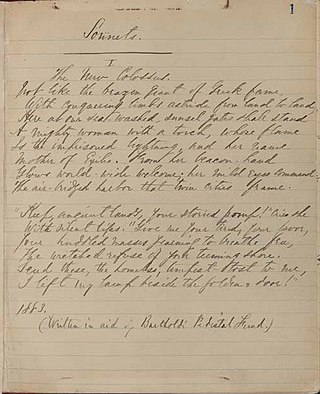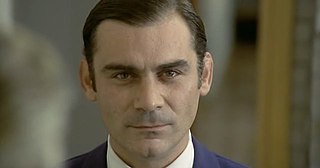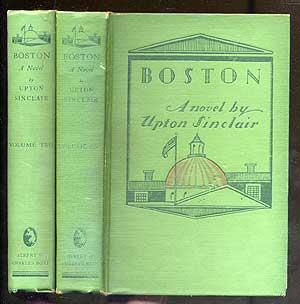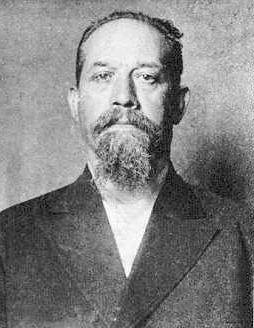
Ennio Morricone was an Italian composer, orchestrator, conductor, trumpeter, and pianist who wrote music in a wide range of styles. With more than 400 scores for cinema and television, as well as more than 100 classical works, Morricone is widely considered one of the most prolific and greatest film composers of all time. He received numerous accolades including two Academy Awards, three Grammy Awards, three Golden Globes, six BAFTAs, ten David di Donatello, eleven Nastro d'Argento, two European Film Awards, the Golden Lion Honorary Award, and the Polar Music Prize in 2010.

Nicola Sacco and Bartolomeo Vanzetti were Italian immigrants and anarchists who were controversially convicted of murdering Alessandro Berardelli and Frederick Parmenter, a guard and a paymaster, during the April 15, 1920, armed robbery of the Slater and Morrill Shoe Company in Braintree, Massachusetts, United States. Seven years later, they were executed in the electric chair at Charlestown State Prison.

"The New Colossus" is a sonnet by American poet Emma Lazarus (1849–1887). She wrote the poem in 1883 to raise money for the construction of a pedestal for the Statue of Liberty. In 1903, the poem was cast onto a bronze plaque and mounted inside the pedestal's lower level.

Brother Sun, Sister Moon is a 1972 film directed by Franco Zeffirelli and starring Graham Faulkner and Judi Bowker. The film is an examination of the life of Saint Francis of Assisi.

Giuliano Montaldo was an Italian film director, screenwriter and actor.

Gian Maria Volonté was an Italian actor and activist, remembered for his versatility as a performer, his outspoken left-wing leanings, and fiery temper on- and off-screen. He is perhaps most famous outside Italy for his roles in four Spaghetti Western films: Ramón Rojo in Sergio Leone's A Fistful of Dollars (1964), El Indio in Leone's For a Few Dollars More (1965), El Chuncho Munoz in Damiano Damiani's A Bullet for the General (1966) and Professor Brad Fletcher in Sergio Sollima's Face to Face (1967).
Webster Thayer was a judge of the Superior Court of Massachusetts, best known as the trial judge in the Sacco and Vanzetti case.
The Nastro d'Argento is a film award assigned each year, since 1946, by Sindacato Nazionale dei Giornalisti Cinematografici Italiani, the association of Italian film critics.
The Nastro d'Argento is a film award assigned each year, since 1946, by Sindacato Nazionale dei Giornalisti Cinematografici Italiani, the association of Italian film critics.

Boston is a novel by Upton Sinclair. It is a "documentary novel" that combines the facts of the case with journalistic depictions of actual participants and fictional characters and events. Sinclair mixed his fictional characters into the prosecution and execution of Sacco and Vanzetti.

The 24th Cannes Film Festival was held from 12 to 27 May 1971. The Palme d'Or went to The Go-Between by Joseph Losey.

Riccardo Cucciolla was an Italian actor and voice actor. He appeared in 60 films between 1953 and 1999. He won the Best Actor Award at the 1971 Cannes Film Festival for the film Sacco & Vanzetti.

Germany in Autumn is a 1978 West German anthology film about the period of 1977 known as the German Autumn, which was dominated by incidents of terrorism. The film is composed of contributions from different filmmakers, including Rainer Werner Fassbinder, Alexander Kluge, Edgar Reitz, Bernhard Sinkel, Alf Brustellin, Hans Peter Cloos, Katja Rupé, Peter Schubert and Volker Schlöndorff. It was entered into the 28th Berlin International Film Festival, where it won a Special Recognition award.

Gino Santercole was an Italian singer-songwriter, guitarist, and actor. He was well known for his breakthrough hit "Questo vecchio pazzo mondo", a cover of P. F. Sloan's "Eve of Destruction", and for the song "Ma che freddo stasera " that he sang in the movie Yuppi du (1975).

"Here's to You" is a song by Ennio Morricone and Joan Baez, released in 1971 as part of the soundtrack of the film Sacco & Vanzetti, directed by Giuliano Montaldo. The song was written by Baez and Morricone themselves. The lyrics are only four lines of text, sung over and over. In the United States and internationally, the song became a veritable symbol for the human rights movement of the 1970s.
The David di Donatello for Best Short Film is a category in the David di Donatello Awards, described as "Italy’s answer to the Oscars", presented annually by the Accademia del Cinema Italiano to recognize the most outstanding Italian short film released in Italy during the year preceding the ceremony, starting with the 1997 edition.

Galleanisti are followers or supporters of the insurrectionary anarchist Luigi Galleani, who operated most notably in the United States following his immigration to the country. The vast majority of Galleanisti or Galleanists were similarly poor and working class Italian immigrants or Italian Americans, and especially Italian anarchists and Italian immigrants or Italian-Americans involved in the labor movement of the time. Galleanists remain the primary suspects in a campaign of bombings between 1914 and 1920 in the United States.
Arrigo Colombo (1916–1998) was an Italian film producer.
Italian Immigrants in Prohibition media refers to the public perception of Italian Americans from 1920 to 1933, when the Eighteenth Amendment was in force. Anti-Italian sentiment was prevalent in the United States before Prohibition, as seen in the 1891 New Orleans Lynchings. The rise in popularity of feature films led to an increase in the exposure of Italian stereotypes. The image of the Italian gangster was promoted by such films as Little Caesar (1931) and Scarface (1932). These films were associated with bootlegging and organized crime that was seen as on the rise during Prohibition.
"Sacco-Vanzetti Story" is a two-part American television play that was broadcast on June 3, 1960, and June 10, 1960, as part of the NBC Sunday Showcase series.












